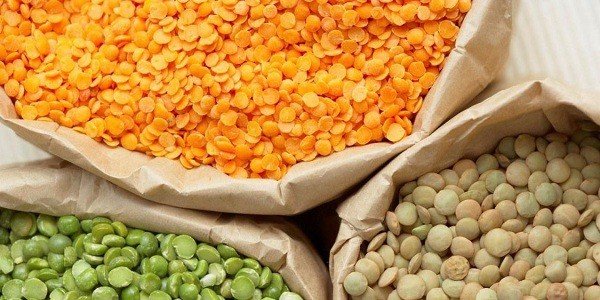Lentils

Lentils are already mentioned in the books of the Old Testament, as one of the main foods of the ancient people. It was cultivated in the Mediterranean countries and in Central and Asia Minor.
But until the October Revolution, Russia was the world leader in the volume of crops of this culture. The main purpose of its cultivation was export and to satisfy domestic (in the Russian Empire) consumption.
At the end of the 19th century, due to the great drought, lentils gained enormous popularity in Russia, as they practically saved the country from starvation.
In Bulgaria, lentils are one of the main national foods, which were extremely popular in the Middle Ages, when the menu of Bulgarians consisted mainly of vegetable food, and meat for most of our ancestors was a luxury and was present on their table mainly on major holidays.
Perhaps, the fact that it ripens unevenly can be defined as the only disadvantage of lentils. Even on one plant, it is possible for half of the pods to fully ripen and the rest to remain green.
In the age of global mechanization, the cultivation of lentil is no longer profitable and now the leaders in terms of the volume of lentil crops is India, where labor is very cheap.
Nutritional value per 100 grams
• Proteins – 25.8 grams;
• Fats – 1.1 grams;
• Carbohydrates – 29.6 grams;
• Water – about 10 -15 grams;
Beneficial properties
Lentils take first place among leguminous foods in terms of plant protein content, which are easily digested and perfectly nourish the body.
According to vegetarians, this food can replace meat, because proteins in some varieties reach about 60%, and the amount of fat is insignificant.
Lentils are also the leader in terms of folic acid content / 100 grams of them contain almost 90% of the daily amount needed by the human body/. The soluble plant fibers included in the composition of this crop have an extremely beneficial effect on the function of the gastrointestinal tract.
Lentils are a source of a wide range of minerals and trace elements, determining its beneficial properties. This culture contains potassium, calcium, phosphorus, magnesium, iron, phosphorus, magnesium, zinc, manganese, etc.
Lentils contain unique substances – isoflavones, which have the property of suppressing malignant breast cells.
These compounds are preserved even after various types of processing, therefore this food can be consumed in a preserved and dried form, and its benefits for human health do not decrease at all.
Some varieties of lentils have the property of lowering blood sugar levels and are useful for those with diabetes.
Purée of this food is recommended to be included in the diet for colitis and stomach ulcers.
Lentils have, perhaps, not the most representative appearance, but on the other hand, they are distinguished by a subtle and pleasant taste. In cooked form, this food retains almost all its beneficial properties.
Its healing effect has long been known to people. They recommended the lens to people who need to restore mental balance.
Porridge from this culture strengthens immunity, restores metabolism, improves heart function and strengthens the walls of blood vessels.
Contraindications for the consumption of lentils
Lentils can be harmful not so much for health as for body proportions, since this food is not dietary at all, 100 grams contain, depending on the variety from 280 to 310 kilocalories.



